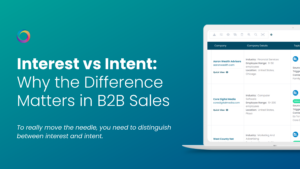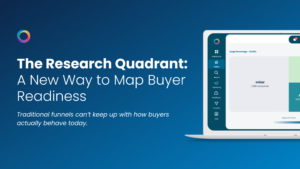Small and growing businesses around the world need a system in place like marketing automation that will ensure they are getting the most value from every lead that enters their pipeline. We understand that; we’ve been there, and we know how important it is to nurture your leads effectively.
As a growing business, you either have a limited budget, a limited team, limited resources or like a lot of us, all the above. But fear not, there is something out there that will help you combat all of these issues and grow your business fast. It’s called Marketing Automation.
Marketing automation can be defined as the software platforms and technologies designed for marketing departments and organizations to more effectively market on multiple channels online, such as email, social media and your website, and automate repetitive tasks.
In the simplest terms, automation is the technology that allows businesses to automate and measure marketing tasks and campaigns to increase productivity and grow revenue faster.
It takes the human being out of specific marketing tasks, for example, email marketing, and lets you use your staff in more productive ways. By automating repetitive tasks such as emails, you can make your marketing strategies flow much easier and effectively. You’ll also save a bucket load of time and effort, allowing you to focus on other essential business tasks.
The benefits of marketing automation
Email automation is the ability to send time or action triggered emails to subscribers with relevant information. Automation is useful for a variety of different marketing purposes. Whether it’s a triggered workflow that helps nurture new leads, birthday greetings that add a personal touch, or automated blog updates that take the legwork out of staying in touch with your audience — email automation makes email marketing more efficient, personalized, and relevant.
Through multi-channel marketing automation, you can:
- Nurture leads at each stage of the sales funnel
- Improve the targeting and success rates of campaigns
- Automate some of the most critical tasks like email sends, replies and pop-ups
- Create standard landing page templates that can be tweaked to suit any campaign
So how do we drive growth through marketing automation?
According to a survey by Liana Technologies, the most common reason that respondents gave for not marketing automation was the lack of expertise (55.6%) and a lack of human resources to manage the system. However, with the right marketing automation platform, you don’t need a big team to look after it, nor do you need a certain level of expertise.
While you might need some time to set up the platform and plugin your website and social media platforms as well as your database, etc., it should be easy and straightforward when you get going. However, you still need to know what you are doing. Before you consider signing up for a marketing automation platform, there are a few things you need to consider. Check out this guide for the ultimate list of questions to ask yourself before signing up for marketing automation.
Best Practices
Here are a few of the best practices to ensure you’re getting the most from your marketing automation platform.
Map out your buyer’s funnel
The more you know about your leads, and how they will move through the sales cycle will allow you to predict and forecast future trends. The more you know, the more prepared you will be for whatever objections are thrown in the way.
The primary goal of marketing automation is to generate leads and nurture them through to the conversion, so they become customers. To do so, you need to map out the various stages a lead passes through on its way to the end goal.
A buyer’s funnel is entirely personal for every business, and your sales cycle might be shorter than others. However long it is, you need to know the stages and how to react and interact with leads when they are in that stage. For example, you’re going to talk to a brand-new lead completely differently than how you’d speak to a lead that is ready to buy. Look at your content strategy and make sure you have captivating pieces of content that will engage leads at every stage of the funnel.
Lead scoring
A lead scoring system will allow your sales and marketing teams to focus on hot leads. When you score leads effectively, you will know when a lead is ready to pass from the marketing team to the sales team. You can score leads based on both demographic attributes (such as job title, industry, level of seniority etc.) and behavioural actions (such as opening and clicking on an email, downloading content and visiting high-value web pages).
Set up triggers to streamline lead progression
Smart marketing automation will allow you to create a sequence of emails that will be delivered based on several different system triggers. For example, when a lead becomes marketing qualified, you can use system triggers to create a task for sales to follow up automatically, update the lead stage to MQL and pull them out of any ongoing nurture campaigns and so on. You can decide on these triggers and when to put them in place.
Personalize, segment and target the right audience
Personalization and segmentation are two of the biggest marketing trends in 2019. If you’re still talking to your audience in the same voice, with the same tone and language, then people will start to get bored and will move on. As consumers, we all want a personalized experience, and we want to know how your product or service will help ME specifically.
Therefore, you need to segment your growing customer database and talk to them like individuals. Address their problems directly, have empathy and understand why they would need your business. Then tell them how your product or service could solve their problem.
Create an effective email drip campaign
Marketing automation can seem a little daunting and overwhelming to those who have never used it before, but it’s quite straightforward. To explain things practically, check out our 6-step series and you can see how simple (and logical) it is for yourself.
- The problem email – possibilities of replacing their existing process with your product.
- The benefit email – A look at the benefits of using a product like yours to achieve their goals. This email should focus on the benefits of using your category of product.
- The transition email – Remember, every potential customer is currently using something else to do what your product could do for them, and the act of switching from that process to using your product is a barrier you need to overcome.
- The tools email – An overview of the tools available to achieve what your product solves, almost like a quick buyer’s guide. This is the first time you introduce your product and outline why it’s superior to your competition. Include a call to action to purchase or sign up for your product for the first time in this email.
- The case study email – A case study on how one of your customers uses your product. Make sure to outline what problems it solves for them and what benefits it brings them.
- The resources email – The final email. Suggest some other eBooks, blogs, templates, kits, etc. for learning more about whatever it is your product does. You can also try including a discount code or special offer in this email as if you haven’t converted them from the previous emails a special offer could help tip them over the edge.
Send email newsletters
Email newsletters are a great way to engage with your customers in their own time. We are a nation of scrollers and swipers, who spend a lot of time on social media, but how often do we go back and read that article or download that piece of content? We tell ourselves, ‘I’ll do that later.’ But later never comes, and we forget about it. Email newsletters are a fantastic way to get in front of your customer and allow them to catch up on your content in their own time.
Email newsletters can be sent either daily, weekly or monthly depending on how often you’re publishing content. They can include exclusive content or merely a round-up of what the prospect has missed out on.
They’re easy to set up with marketing automation and can be programmed to be sent at the same time of every month. A template can be created and updated accordingly as and when is needed.
Run multi-channel campaigns
Multi-channel campaigns are a critical part of effective digital marketing in 2019. You need to get in front of your audience on the channels that they are already using. You need to do this over and over again before they will trust you enough to listen to what you’re saying.
Every business is unique, and so are its customers and leads. By pushing out information through various channels, you are more likely to reach the maximum number of contacts.
Routinely cleanse your database
Your growing database is such a valuable asset to your business, so you need to treat it with care and respect. If your database starts to accumulate fake contacts or duplicates, it can have a detrimental effect on your overall marketing strategy.
Duplicates appear when someone who is already in your database completes a form with a different email address, name or another identifier. However, you can manage this by routinely merging duplicates and cleansing your database.
Fake contacts enter your database when someone completes a form with a false email address so that they can access the content you’re offering. You can avoid this by putting verification measures in place that identify fake emails and phone numbers.
You can also run an automated cleansing journey and measure the open rate. If people aren’t opening your email, then they’re either old, fake or don’t want to listen to what you’ve got to say. Either way, they’re just taking up space in your database, and therefore skewing your metrics.
Measure everything
Marketing metrics are critical in 2019 and marketing automation will allow you to track every touchpoint you have with your contacts.
You can track of site and landing page visits, content downloads, the number of leads you’ve generated from a particular campaign, campaign outcomes and a lot more. These metrics are all vital for your growing business as it will let you see clearly what is working and what is not. You can learn and forecast trends for the future, so you are continually improving your marketing campaigns.
Conclusion
Marketing automation is a growing trend and a vital part of any SME or Digital Agency in 2019. While it’s easy and straightforward when it’s set up, you still need to know the best practices needed to excel and improve your overall marketing strategy.
More from Zymplify
Top Inbound Marketing Tools to use in 2019
Inbound Marketing and Marketing Automation
The Power of Inbound Marketing: Are You Really Using it Effectively?



